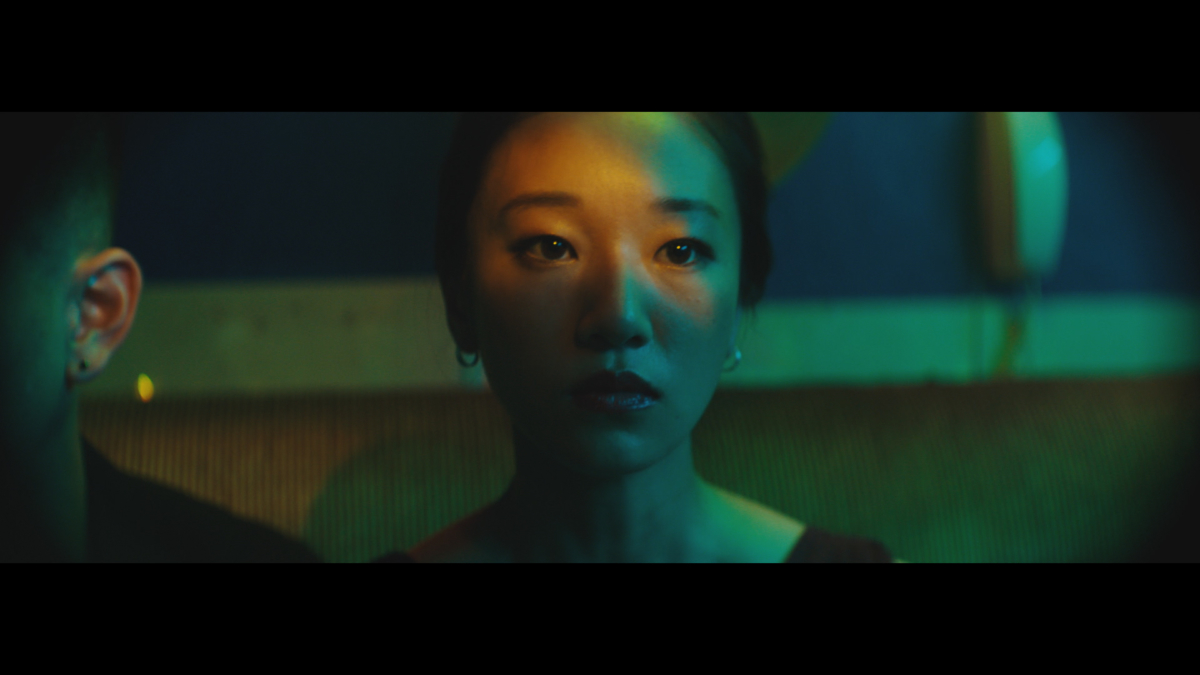Written By: Michelle Ahn and Demi Guo
In the second installment of his unofficial trilogy about Korean American experiences, Justin Chon successfully presents a sophomore film that shows he isn’t stopping anytime soon. While change and growth are pillars in any narrative, Chon manages to incorporate these elements not only in the characters and their actions, but also in the setting. The entire film is an ode to Chon’s hometown of Southern California, and also an ode to his own reckoning of what it means to be Korean American.
“Ms. Purple” follows the rekindling relationship between a sister and brother as they take care of their bedridden father in a gentrifying Koreatown, Los Angeles. An older brother himself, Chon has been wanting to tell a story centered around a brother and sister relationship. “I think the dynamic between a brother and sister (because it’s man and woman) is different than a brother-and-brother or sister-and-sister. And I haven’t really seen it even outside of our community.” While the primary focus is showing how two people with the same blood and genes can have different perspectives and personalities, at its core, the film addresses filial piety commonly found in Confucian-influenced East Asian cultures. Through his protagonist, Kasie (poignantly played by Tiffany Chu), Justin Chon manages to present the burdens of filial piety and unabashedly questions the justification for it.
Collateral cultural baggage
Kasie, as the dutiful daughter, has given up her dream and a higher education to support her sick father. She works as a hostess entertaining men at a karaoke bar, flipping over a stone to reveal an underside that, as Chon points out, exists in every society, including in Los Angeles and South Korea. It’s an open secret and on weekends in Koreatown you can oftentimes see vans pulling up with girls piling out. “That’s just how business in Korea’s done — in these rooms,” Chon tells me. “It’s so prevalent that it wasn’t like … it was some world, some subculture that I had to do investigative work. You know what I mean? Which is unfortunate.”
Having friends who have also taken this occupation to make ends meet, Chon emphasizes that he knew he had to tread the subject matter carefully. He even reviewed numerous edits with various women in his network. Chon is one of the rare male filmmakers who successfully portrays female protagonists as standalone, as seen in his previous debut film “Gook” about the LA Riots. But he is quick to note that writing for a 9-year-old girl and for a 24-year-old woman is completely different. “I was a little naive thinking that ‘Oh yeah, I’m a human; I have empathy.’ That I could write a script and it wouldn’t be that difficult, and I was proven very wrong very quickly.”
The script-writing process was a push-pull. How to not exploit Kasie, especially considering the environment she is in? How to write her while grappling with Chon’s own guilt as a man? “Anytime something bad happened to her, I tried to write in something good happening to her,” he said about the initial process. “And when it wasn’t working, I just stepped back and I was like, ‘Oh shit. I’m actually doing a disservice by portraying it that way because that doesn’t represent real life.’ Life isn’t fair. Life has its injustices. Life is really tough. And if I were to shy away from some of these realities, it’d be much more of a patronizing viewpoint.”
Chon further elaborates, “It was my responsibility to make sure that I didn’t make the main actress an exploitative character. I made it very clear that these were her decisions.” Although her choices were limited due to her socioeconomic status, Kasie is constantly subconsciously choosing to be the caretaker — to her father and to the men who visit the karaoke bar.
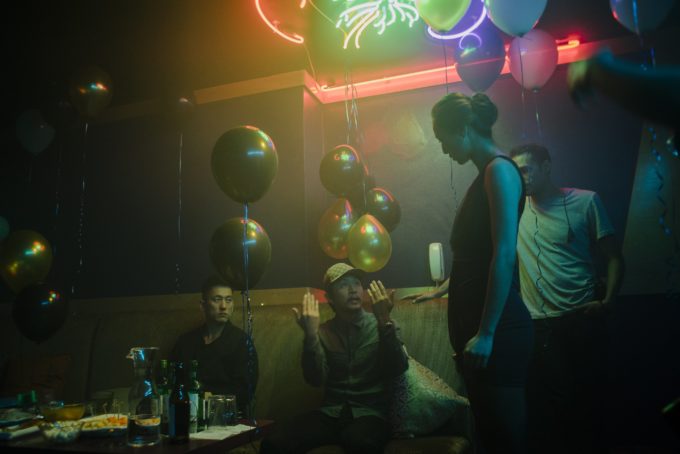
“I think she felt the entire time that she was alone and she had to take the whole burden of the world on her shoulders. And me personally, I feel like that sometimes. And I do feel like a lot of Asian American kids feel that way, like carrying the burdens of parents, filial piety, and the financial burdens, and the responsibility that we think we have.” Chon calls this the “collateral cultural baggage.” In Korean culture, it is expected that children take care of their parents once they’re old enough to. Filial piety is seen as one of the higher moral values in Korean culture and society. In fact, respecting one’s elders is consistently reminded to Koreans in as simple an act as greeting someone: with a respectful bow and using more formal diction.
What Chon challenges in “Ms. Purple” through Kasie is whether filial piety should, in fact, be the highest value. The irony is subtle, yet loudly screaming at the audience towards the end of the film: by taking care of her father, Kasie is not taking care of herself. Chon puts it best: “The line of work she takes it’s not an accident. That was very much to exemplify how much she’s not taking care of herself and she’s so focused on her father … at the cost of herself and her own humanity.”
Kasie is, after all, an individual. She’s a pianist. She’s a sister, and her brother is the perfect foil to show how differently they go about life and taking care of their father. The whole story is about how she walks between different parts of herself: familial duty, her culture, and her own humanity. Chon himself now has a daughter. “Some of these now as a new parent, my viewpoint and perspective on how I want to tell stories and what I want to tell them about has completely changed and it’s really important that I can stand by the film.”
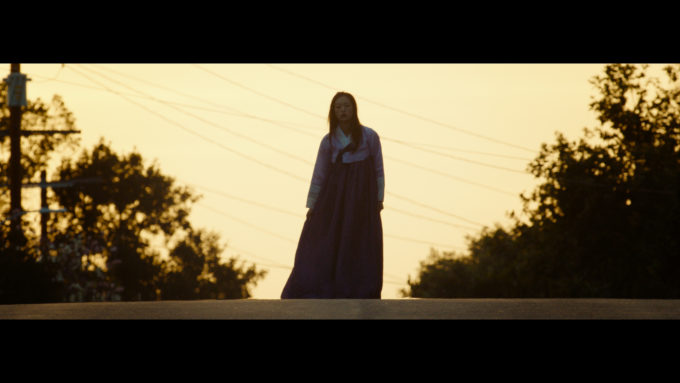
Leaving the old country for the new country
The purple Korean traditional garment, hanbok, Kasie wears in “Ms. Purple” is a key symbol throughout the film. There’s an extremely raw scene, where Kasie finally decides to burn the traditional garment. With this, Chon wanted to show the burning of the old country for the new country: the notion of leaving your motherland’s (in this case Korea) traditions behind when you move to a new home (America). It’s not only a key pivotal point for our protagonist’s narrative, but also the main message to Chon’s audience and viewers. “I’m not saying per se the dress or that whole tradition of hanbok and all that stuff, but it’s a representation of maybe there are things that are better left in the old country, including what she does for work.”
Another key symbolic element in the film is palm trees. One of the first scenes is a lower frame rate shot of palm trees swaying against the sky. Palm trees are actually not native to California, but were instead brought over from the Pacific. Foreign-born, they aren’t getting the water they need and with Los Angeles County often in drought seasons, they won’t be replanted once they die since the county cannot sustain their needs. “That’s how it feels being Korean American. I feel like are we meant to be here? Are we not? Who is meant to be here? Who is not? I don’t know. And that’s the question I’m raising.”
It’s a question that cannot be easily answered. Even photographing Koreatown was a difficult feat for the team. “There’s not one identity,” Chon tells me as he alludes to Los Angeles’ diversity. For this reason, it was almost natural for Chon to include a Chicano storyline as well in “Ms. Purple.”
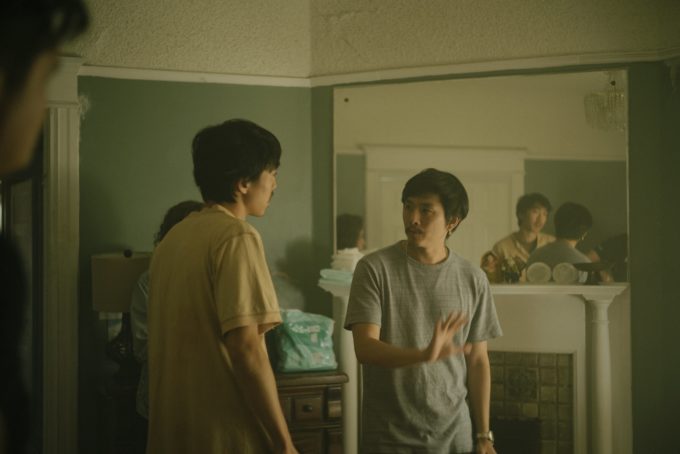
Justin Chon, the director
While Chon may not have a direct answer to “What is a Korean American?” one thing that’s clear is Chon’s growth as a director and confidence in his own style and approach to filmmaking. While in “Gook” he both directed and acted on screen, in “Ms. Purple,” he is solely in the director’s chair behind cameras. “It’s been exhilarating,” Chon tells me.
Many may ask why Chon didn’t play Kasie’s brother’s role, Carey. His explanation is exactly the response you’d expect from someone heavily invested in telling Asian American stories and the artistry of filmmaking. “One of the biggest goals of this film for me was to find two people that were unknowns and try to put them on the map.” For Chon, it’s time for the Asian American community to create our own stars. Diversity is still a hot topic in Hollywood, but the net executives cast is often limited, with only a select pool of Asian American talent having experience on the big screen. “It shouldn’t be a studio that allows us to pick somebody for whatever internal reasons that they have. We should be making films and creating our own fucking stars.”
And stars Chon did create with this film. Tiffany Chu has been on top performer’s lists when the film premiered at Sundance and Teddy Lee’s performance as Carey is just as noteworthy. To help them prepare, Chon had the two actors spend two weeks together at the house where they were going to film. “I was like ‘you guys hang out, talk, go have food and find out what each other’s buttons are.’” Their hard work and artistry is fully shown through their organic and raw chemistry, especially in the middle of the film when they’re eating together in the living room.
While Chon gives full credit to Chu and Lee for building their relationship on screen, it’s undeniable to acknowledge his creative role off screen. Working with the same incredibly talented director of photography, Ante Cheng, Chon forgoes the black-in-white in “Gook” for a distinct green color palette in “Ms. Purple.” There are green tints in both the white highlights and black shadows throughout each frame and composition. Green is not only complementary to purple, but it also represents money. Chon elaborates, “That was a decision because what she does there’s a lot of money involved and her having to sacrifice herself for money. What is the cost of money and what do you do for money?”
Another key visual style of Chon’s is the use of stutters and lower frame rates. We saw this in “Gook,” and we see it here again in “Ms. Purple.” Influenced by Wong Kar Wai, Kore-eda, and other Korean and East Asian cinema, Chon’s goal was to bring a visual familiarity to his audience. “It’s entirely an American story, but I’m always trying to find some creative, fresh ways that I can bridge the two (Asian and American cinema).” Nevertheless, Chon is keen on creating his own visual language. For example, Wong Kar Wai uses the lower frame rate for romance and to build relationships. Chon uses them for solitude and melancholy, which is why the most poignant symbols in his film (palm trees in “Ms. Purple” and the protagonist dancing in “Gook”) are filmed in this style.
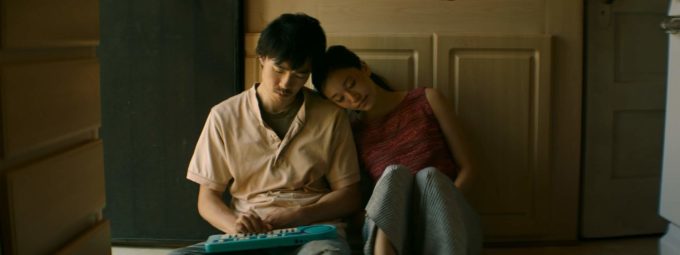
The struggles continue even in new country
From the LA Riots to a modern-day karaoke bar, the Korean American story goes on. Koreatown isn’t just Chon’s world; it’s his neighbors and local business owners, people who pitched in their support and provided filming locations. That’s how you bring that world into film. Getting the community involved for the making of the film, though — “That is a pretty tricky topic,” Chon said. “People didn’t want to support us. The community just didn’t — they didn’t see the value in it.”
This should not be an unexpected answer for those from Asian American enclaves. But some people did see the value in it, Chon recounted, including someone who lent his rooftop as a venue for shooting scenes with Carey and the father. On the other hand, Chon said, “the Chicano community really came out.” He could say the same about the African American community, whose narrative was interwoven with the Korean in “Gook.” They openly lift each other up, and he saw something like that happen for Asians when “Crazy Rich Asians” and “The Farewell” came out.
“I think I won’t be serving everyone if I didn’t tell the truth,” he said. “It doesn’t deter me from doing what I’m meant to do. But, you know, I think now that the film is out there and it’s made, over time, I hope they change their minds.”
His sense of empathy extends to why he has also woven together different minority communities in both “Gook” and “Ms. Purple” between Kamilla and Kasie. His next film will be focused on a Korean American’s relationship with white America. It’s not just about Asians within Asian societies. The othering nature of the history of Asians in Hollywood has been sluggish in portraying us as a moving, breathing part of the country. In his own native California, all these groups live side-by-side, though the popular Asian American films do not necessarily reflect that. “I’m very interested in seeing how we all coexist. So I think films, when they’re done right, sort of gives us an example of how we all should operate and live. That’s the goal at least, right?”
To be fair, the Asian American community is still growing its spot in entertainment. “When an Asian American film comes out, it is your responsibility to support these. We don’t have enough yet to be picky. We’re not there yet,” Chon emphasizes. “We’re not there.”
This is his take as a filmmaker. “My purpose and my ‘why’ is to bring empathy to our community, which is Asian Americans. If there’s no one to kind of be like, ‘Hey guys, I did this for you guys,’ and there’s no response to that? That’d be really sad. I mean, it wouldn’t change what I do, but I do think that you see such a strong presence in the African American community and how they support each other and they go to their own movies, as seen with Lulu’s film and ‘Crazy Rich Asians.’”
That starts in the hometown. Film festivals — including our own AAIFF — are a key player in this growth, he said. It acknowledges that all this effort exists in the community. That’s how the community endorses the films. It shows that all the work is not for naught, but it gets the word to begin spreading. Chon always makes sure his presence known there and it’s not just him doing all this. It’s other filmmakers, his contemporaries, who are also holding the torch. “We need to celebrate our own.”
“Ms. Purple” made its New York Premiere at the 42nd Asian American International Film Festival. It opens at Landmark’s Nuart Theatre in Los Angeles on September 6th and at the Quad Cinema in New York City on September 13th, with national expansion in the following weeks. More information on showtimes can be found here.
Director: Justin Chon
Stars: Tiffany Chu, Teddy Lee, Octavio Pizano, and James Kang
Running Time: 1 hour 27 minutes
Genre: Narrative, Drama

